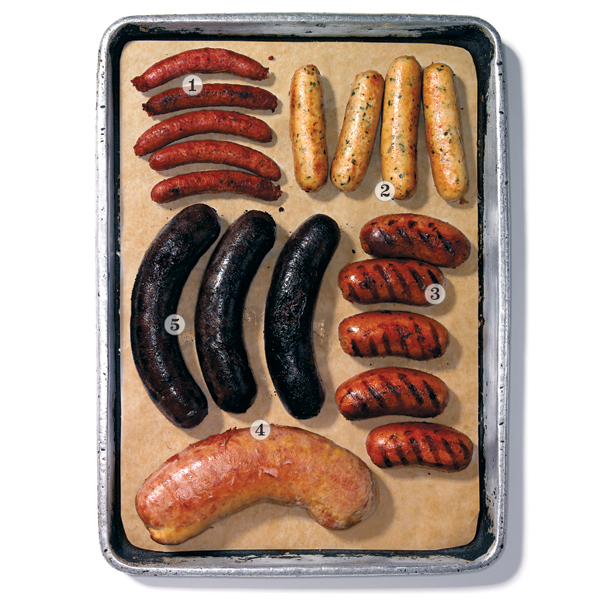Linked In: A Sausage Vocab Lesson Courtesy of Bronwyn’s Tim Wiechmann
 Photo by David Arky
Photo by David Arky
Styling by Ed Gabriels/Halley Resources
As the product of German parents, T. W. Food chef Tim Wiechmann knows a thing (or five) about wursts. And although the fare at his quaint Huron Village restaurant skews French, he’ll be putting his heritage front and center later this fall with the opening of Bronwyn, a German/Austrian/northern Italian eatery in Somerville—which makes him the perfect candidate to school us on all things sausage. Here’s an inside look at the links he’ll be crafting by hand at his new restaurant.
1. Fränkische Bratwurst
The Background: This is one of the flag-ship bratwursts of Bavaria, the German state that’s at the heart of Oktoberfest.
Wiechmann Says: “It’s a smaller size, and you eat a bunch of them. That sausage always has milk, marjoram, beef, and pork.”
2. Weisswurst
The Background: The large amount of veal in this classic southern Bavarian sausage is responsible for its white (or Weiss) appearance.
Wiechmann Says: “It’s super tender and delicious because of the veal.”
3. Bierwurst
The Background: A fat sausage, Bierwurst gets its name from its ideal beverage pairing—copious amounts of beer, of course.
Wiechmann Says: “What makes it special is that it has egg and bread in it. It’s similar to a French boudin.”
4. Thuringer
The Background: This variety originated in the German state of Thuringia.
Wiechmann Says: “It’s a veal, beef, and pork sausage that’s usually grilled and eaten with sauerkraut and a roll.”
5. Blutwurst
The Background: Another Bavarian sausage, Blutwurst literally translates to “blood sausage,” and can be served hot or cold and sliced.
Wiechmann Says: “It’s more of a historical thing, that you are serving the whole pig, and blood is a large part of the pig.”